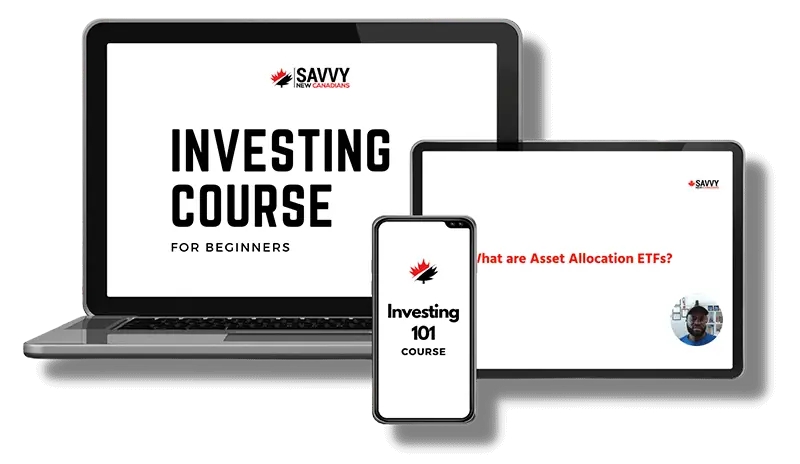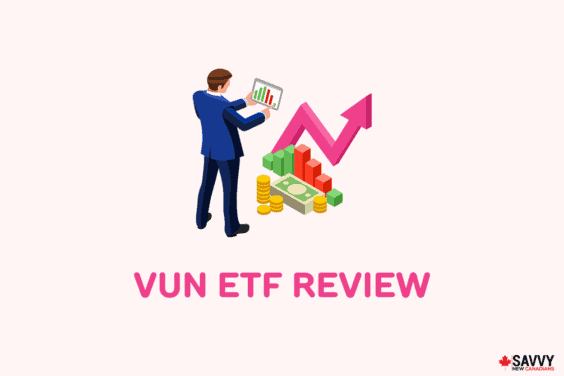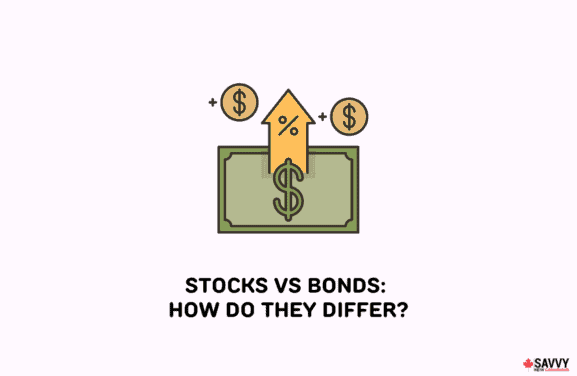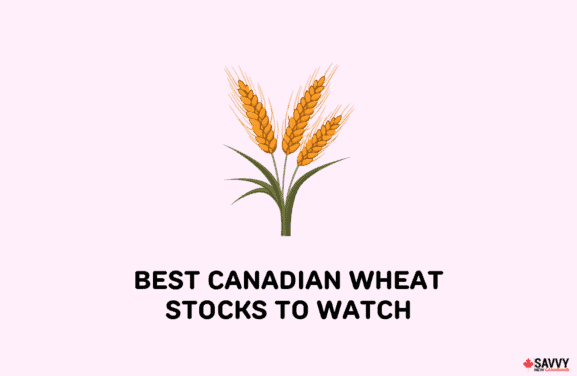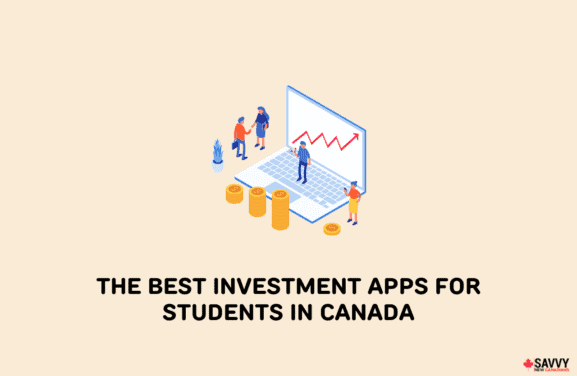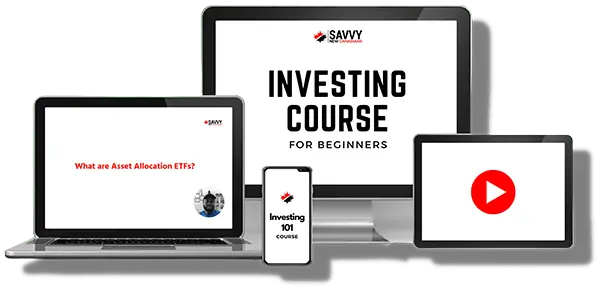One of the best ways to grow your wealth over time is to make your money work for you. By creating passive income streams, you unlock the potential to grow your money exponentially.
For most Canadians, building income streams can be done with as little as $20,000. This article will discuss the best ways to invest $20k for passive income in 2024.
Where To Invest $20K in 2024
Here are some assets you can purchase to invest $20,000.
Stocks
The first place that many people will invest $20k is in the stock market. The Toronto Stock Exchange (TSX) lists over 1,500 companies. Many of these companies may be familiar to you, as most of the largest companies in industries such as banking and energy are publicly listed on the TSX.
Buying stocks in Canada is as easy as signing up for a brokerage account and depositing your $20k. Canadian discount brokerages like Wealthsimple Trade and Questrade provide lower trading commissions and make it easier for new investors to buy Canadian stocks.
Investing in stocks is a long-term investment strategy that allows you to own a part of companies directly. The stock market does not come without risks: market crashes and bear markets can happen every few years and put a major dent in your investments.
Overall, investing in stocks is one of the best ways to grow your investment over a long-term horizon.
Wealthsimple Trade

Trade stocks, ETFs, and options
Excellent trading platform for beginners
Deposit $150+ to get a $25 cash bonus
Transfer fees waived up to $150
Questrade
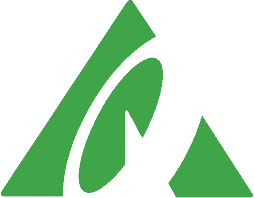
Trade stocks, ETFs, options, FX, bonds, CFDs, mutual funds, etc.
Get $50 trade credit with $1,000 funding
Low and competitive trading fees
No quarterly inactivity fees
Access to advanced tools and trading data
Top platform for advanced traders
Transfer fees waived
ETFs
ETFs or Exchange Traded Funds are baskets of assets that trade on the TSX. These funds can hold a group of stocks and bonds or even track an entire index or stock market. They can also provide diversification to investors at a much lower cost than owning each stock individually.
Like stocks, ETFs are generally a long-term investment strategy. These funds are subject to the same ebbs and flows as stocks but generally see less volatility. You can buy and sell ETFs at any Canadian brokerage.
Mutual Funds
Mutual funds are like ETFs, except they do not trade on stock exchanges and are offered privately by financial institutions.
These funds are pools of investor money that are actively managed by fund managers. Mutual funds also tend to have higher management fees than ETFs.
As with stocks and ETFs, mutual funds are a long-term investment strategy. They are popular investments in retirement accounts, especially those that pay distributions that can be re-invested into the initial principal. They also have risks but, like ETFs, see less volatility than stocks because they are structured funds.
Bonds
Bonds are fixed-income assets that pay out a steady distribution of interest to the bondholder.
A good way to think of bonds is as loans to a government or corporation. In exchange for your principal, these entities will pay out interest on the loan. At the expiration of the bond term, you will receive back your principal in full and keep any interest you receive.
These assets can be short-term or long-term in nature. The longer the bond term, the higher the interest rate, or coupon yield as it is known for bonds, will be. If you are unsure which bonds to buy, you can invest in thousands of them in one fund if you buy a bond ETF. Bonds and bond ETFs are considered to be low-risk investments.
Alternative Investments
Alternative investments can include any assets not categorized under the previous headings. These can be anything from real estate to antiques to private equity. Since this category is diverse, risk ratings range from conservative to extremely high-risk.
Who are alternative investments for? These can be good investments for people who want to avoid volatility in the stock or bond markets.
Be warned that for some alternative investments, $20k might not be enough to get started. Don’t let that discourage you, though, as some alternative investments can far outperform stock returns over the long run.
Robo-Advisors
For Canadians who want to start investing but do not know where to start, we present the robo-advisor. These are professionally managed accounts that automatically invest your money according to your personal investment strategy.
Robo-advisor fees might be slightly higher than a self-managed portfolio, but they also provide an unbiased investment view and take a more balanced approach. Nearly every brokerage in Canada will offer some sort of robo-advisory service.
Questwealth

Professionally managed ETF portfolios
Multiple accounts & low fees
Auto rebalancing and div reinvesting
Invest $10K free in 1st year
Best Accounts To Invest $20,000
These are some of the best accounts to invest and maximize your $20K.
Tax-Free Savings Account (TFSA)
The TFSA has been an outstanding investment account for Canadians. It was introduced in 2009 and, as of 2024, provides eligible Canadians with a lifetime contribution limit of $95,000. As the name suggests, any interest, dividends, or capital gains are completely tax-free in this account.
Canadians can invest in stocks, ETFs, mutual funds, bonds, GICs, and several other assets in their TFSA. There are no fees or penalties for withdrawing from a TFSA.
The only penalties for a TFSA are overcontributions and earning foreign dividends, which are subject to a withholding tax. US and foreign capital gains are not taxed in a TFSA.
Registered Retirement Savings Plan (RRSP)
The RRSP has long been a popular choice to invest and save for retirement in Canada. It is a long-term investment strategy, and you can be penalized for early RRSP withdrawals.
The benefit of RRSPs is that your contributions are tax-deductible. This means that any contributions you make within your annual contribution limit are subtracted from your taxable income for the year.
Unlike TFSAs, RRSP withdrawals in retirement are still taxed. The idea is that in retirement, your tax bracket will likely be lower than when you are working.
In an RRSP, US dividends are not subject to a withholding tax as they are in a TFSA. But any capital gains, dividends, or interest will eventually be taxed when you withdraw them in retirement.
Registered Education Savings Plan (RESP)
RESPs are an excellent way for parents or guardians to invest in a child’s future education. The RESP can hold the same assets as any other registered account, including stocks, ETFs, mutual funds, bonds, and GICs.
An RESP can only be open for up to 36 years, after which point the funds need to be used for education or transferred to an RRSP.
Each year, the Canadian government will match up to 20% of $2,500 or $500 in the RESP for free. Apart from that, there is no annual contribution limit, except for the lifetime contribution limit of $50,000.
Capital gains and dividends are tax-sheltered like with an RRSP, so they are taxed when the total funds are withdrawn. Given that most students are in a low tax bracket when in school, withdrawn RESP funds usually end up being tax-free.
Non-Registered Investment Accounts
Non-registered investment accounts have no limitations in terms of contributions or withdrawals. You can invest in any assets in a non-registered account, but any interest, dividends, or capital gains are completely taxable.
To maximize tax-free investment gains, it is important to first contribute the annual limit to any registered accounts before using a non-registered account in Canada.
How to Invest $20k In Real Estate
No investment discussion in Canada is complete without mentioning investing in real estate. Some might think that $20k is not enough for investing in real estate in Canada, but there is more than one way to gain exposure to Canada’s lucrative real estate market.
Buying a house to live in is the most common way to invest $20k in real estate. But you can also buy an investment property, a vacation property, or, if you are brave enough, participate in property flipping.
While 20k likely isn’t enough to cover a down payment on a house in most places, you can always buy Real Estate Investment Trusts or REIT stocks.
These are companies that own properties across Canada and collect rent from tenants. Most of this rent is re-distributed to shareholders as a monthly or quarterly dividend.
How To Invest $20K in a Business
For the more ambitious investors, $20k is a good amount of capital to start a business in Canada. Whether you want to start one yourself or invest in someone else’s, investing in a business can supercharge the growth of your wealth.
Of course, starting a business does not come without risks. There is always a risk of bankruptcy, increased competition, or financial struggles. Starting a business is certainly a long-term investment but one that can pay off in a big way if executed correctly.
How To Invest $20K Short Term
Savings Account
The easiest way to invest your money in the short term is to just put your $20k into a savings account. Now, most savings accounts will not pay much of an interest rate.
Luckily, there are high-interest savings accounts in Canada that will pay you anywhere from 1 to 5% on your balance.
The only risk with savings accounts is that the inflation rate often outpaces the interest you earn. If this is the case, your money will lose value.
GICs
GICs or Guaranteed Investment Certificates are another form of fixed-income assets. They are similar to bonds in that you buy a GIC and earn interest payments during the term. At the end of the term, you receive back your principal and keep any interest earned.
GIC terms range from 2 to 10 years and are popular investments for retirees given their consistent payments and zero risk of losing money.
HISA ETFs
High-interest Savings Accounts ETFs are a relatively new asset class in Canada. Rather than leaving your $20k in one HISA, investing it into a HISA ETF exposes you to multiple different HISA accounts at multiple banks.
The fund managers then collect this interest and pay it to investors as distributions while keeping a minimal MER fee.
Note that the HISA interest rates will fluctuate according to the Bank of Canada’s overnight rate. When interest rates inevitably fall back down, so too will the HISA offerings.
What To Consider When Investing $20,000
Investment Goals
Before investing, you need to ask yourself the reason for wanting to invest in the first place. For many Canadians, it is for having enough money in retirement or setting up your children with an inheritance. Others have short-term goals like paying off student loans or buying a new car. Always know your investment goals before investing any of your hard-earned money.
Time Horizon
The investment goals of a University student will be different than those of someone who is set to retire. Your time horizon for investing will dictate how risk-averse you are and which assets you ultimately invest in. Generally speaking, the longer the time horizon, the more opportunity there is to take risks.
Risk Tolerance
When investing, you should always stay within your comfort zone. Risk tolerance is an extremely personal thing, and everyone has their own reasons for being a risk-taker or risk-averse. If you can risk a little to earn more over the long run, then you will be comfortable investing in assets like stocks. But if you do not want to lose any money at all, you will most likely look at assets like GICs or bonds.
Fees
Some investments are more expensive than others. Assets like stocks and ETFs come with commission fees on brokerages. ETFs and mutual funds come with a MER or Management Expense Ratio which is collected by the fund managers. You should also be aware of taxes when you invest and consider investing in more tax-friendly assets and accounts.
Paying Off Debt
Before investing, take stock of your current financial situation. Be sure to pay off any high-interest debt like credit card debt before considering investing. This does not include debt like mortgages or student loans, although paying down those debts is also beneficial in the long run.
How To Invest Using a Self-Directed Brokerage Account
A self-directed brokerage account allows you to take full control over your investments. This portfolio can hold assets that reflect your investment goals, risk tolerance, and time horizon.
Opening a self-directed brokerage account at a discount brokerage allows you to save on commission fees and manage your own investment portfolio.
For example, you can open a new Questrade brokerage account online and fund it from a bank account via Interac eTransfer or any other deposit method.
Choose from a long list of assets that Questrade offers, including stocks, ETFs, mutual funds, bonds, GICs, options, precious metals, and Forex, in both registered and non-registered accounts.
Best Brokerages in Canada
Wealthsimple

Questrade

Qtrade

$25 sign up cash bonus with $150+ deposit
$50 trading fee rebate
Up to $150 signup bonus
$0 trading commission for stock and ETF trades
$0 ETF purchases; $4.95-$9.95 for stock trades
100+ free ETFs; $6.95-$8.75 for ETF/stock trades
Available on all devices and great for beginners
Offers other securities incl. FX and bonds
Excellent customer support
FAQs
There are many ways to invest a $20,000 windfall. If you are unsure of what to do initially, you can always stick it into a HISA or HISA ETF to start earning a high-interest rate on your balance. From there you can take your time and decide if you want to invest in stocks, ETFs, or even something safe like a GIC.
The safest way to invest $10,000 in Canada is a HISA or guaranteed fixed-income assets like government bonds or GICs. If you are looking for the largest potential gains then you may also want to look at Canadian real estate.
Yes, with a lot of hard work and a bit of luck. Turning $25,000 into a million usually takes years, if not decades, to achieve. This can be done with anything from stocks to real estate to starting your own business.
Safe investments in Canada are assets like HISAs or guaranteed fixed-income assets. These have nearly zero risk of losing any money and provide a steady and consistent return on your investment.
